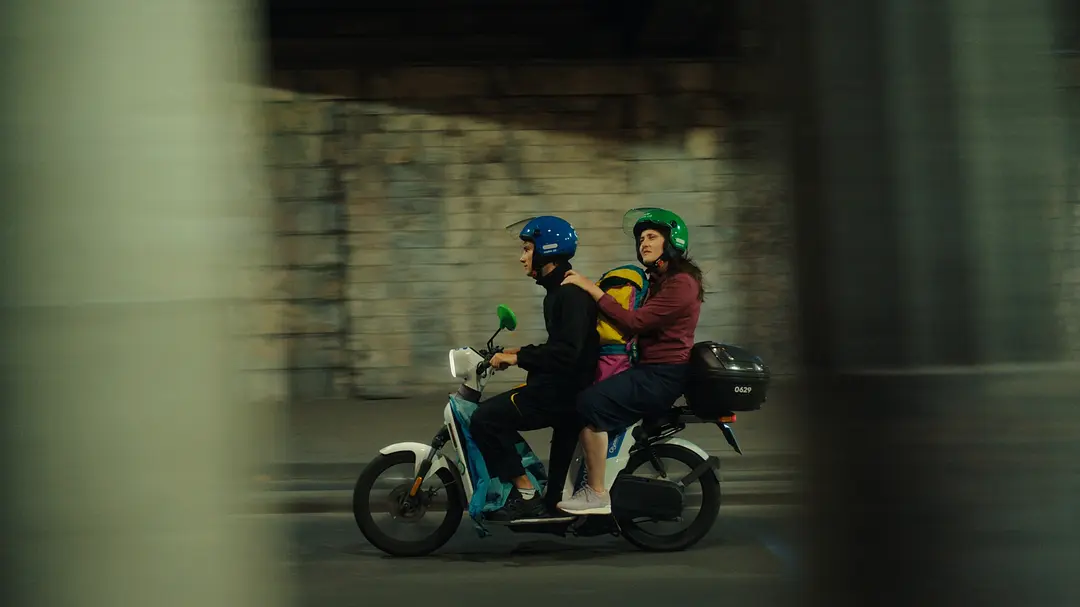Le Rendez-vous de l'Été (2025): A Luminous Tapestry of Human Connections in the City of Light
Directed by Cédric Klapisch (La Venue de l'Avenir), Le Rendez-vous de l'Été (2025) is a sun-drenched ode to Parisian summers, blending whimsy and melancholy with the precision of a seasoned flâneur. Set against the backdrop of a heatwave that melts social boundaries as swiftly as asphalt, the film navigates the lives of four strangers whose paths converge at a renovated lakeside retreat near Paris. What begins as a lighthearted comedy of errors evolves into a poignant meditation on cultural collisions, transient intimacy, and the quiet revolutions of everyday life.
Cultural Crossroads and the Art of Misunderstanding
At its core, Le Rendez-vous de l'Été thrives on the friction between French savoir-vivre and foreign curiosity. The film’s protagonist, Clara (Léa Seydoux), a disenchanted Parisian bookseller, rents out her family’s refurbished lakeside cottage—a nod to the real-life Le Rendez-vous retreat in Champex—to an American travel writer, Ethan (Jesse Eisenberg), whose obsession with "authentic French experiences" borders on parody. Their initial exchanges, riddled with mistranslations and misplaced politeness, mirror the cultural minefields described in expatriate accounts of French social etiquette. When Ethan insists on greeting Clara with a cheek kiss despite her visibly uncomfortable body language, the scene becomes a microcosm of Franco-American tensions: earnest enthusiasm clashing with guarded tradition.
The supporting cast amplifies this theme. Amira (Zahia Dehar), a Moroccan-born chef navigating Paris’s elitist culinary scene, and Lars (Gustaf Skarsgård), a Swedish architect mourning a failed relationship, round out the quartet. Their interactions at communal dinners—where debates over apéritif etiquette escalate into existential sparring—echo the delicate balance of French social rituals, where casual conversations often conceal deeper negotiations of identity and belonging.
The Architecture of Ephemeral Bonds
Klapisch frames Paris not as a postcard cliché but as a living organism pulsating with contradictions. The film’s visual language oscillates between the grandeur of Haussmannian boulevards and the claustrophobic charm of cobblestone alleys, where tourists and locals perform a daily ballet of coexistence. A standout sequence follows Clara and Ethan on a midnight stroll along the Seine, the river’s shimmering surface reflecting both the Eiffel Tower’s glow and the detritus of late-night revelers. Here, the city becomes a metaphor for impermanence: a place where connections flare brightly but fade with the dawn.
The lakeside cottage, meticulously restored to blend "tradition and modernity", serves as a crucible for transformation. Its sun-dappled terraces and communal breakfasts—shot with a tactile reverence for crusty baguettes and spilled café au lait—evoke the art de vivre that Ethan relentlessly romanticizes. Yet, as the characters peel back layers of performative charm, the cottage reveals its secrets: a hidden diary detailing Clara’s grandmother’s wartime affair with a German soldier, and a crumbling stone wall etched with decades of guests’ initials. These discoveries anchor the film’s fleeting relationships in a deeper historical continuum, suggesting that even transient encounters leave indelible marks.
The Politics of Silence and Noise
Klapisch masterfully employs sound design to explore French social codes. In one scene, Amira’s sous-chef admonishes her for laughing too loudly during service—a subtle nod to the unspoken rule of pudeur (modesty) that governs public behavior. Later, Lars’s decision to play ABBA’s Dancing Queen at full volume in the cottage becomes an act of rebellion against Parisian reserve, sparking an impromptu dance party that dissolves cultural barriers. The film’s soundtrack, a mix of Françoise Hardy’s melancholic ballads and Django Reinhardt’s jazz, underscores the tension between nostalgia and reinvention.
Language, too, becomes a weapon and a bridge. Ethan’s butchered attempts at French—"Je voudrais un baguette, s’il vous plaît"—draw eye rolls from market vendors, yet his vulnerability disarms Clara. Their halting bilingual conversations, peppered with Google Translate mishaps, evolve into a private lexicon that transcends grammar. Meanwhile, Amira’s mastery of Parisian slang ("C’est ouf!") masks her insecurities about belonging, while Lars’s silence speaks volumes about Scandinavian stoicism.
The Ghosts of Summers Past
Interwoven with the main narrative are vignettes of previous cottage guests: a 1960s Algerian jazz musician, a Soviet dissident poet, and a millennial influencer documenting her "digital detox." These fragments, presented as Super 8 montages and Instagram story parodies, critique the commodification of authenticity. The Soviet poet’s handwritten letters, buried beneath the floorboards, contrast sharply with the influencer’s curated VanLife posts, asking: What do we preserve, and what do we perform?
Clara’s arc mirrors this interrogation. Initially dismissive of her family’s "dinosaur" traditions, she gradually uncovers the cottage’s role as a sanctuary for outsiders—a theme echoing real-world expatriate accounts of finding belonging through shared meals and imperfect French. Her decision to convert the cottage into an artists’ residency, announced in a climactic speech at a village town hall, bridges generational and cultural divides.
A Cinematic Ode to the Unfinished

At 148 minutes, Le Rendez-vous de l'Été occasionally meanders, yet its sprawl feels intentional—a rejection of Hollywood’s three-act rigidity in favor of the French New Wave’s embrace of ambiguity. Klapisch leaves threads unresolved: Amira’s Michelin ambitions remain uncertain, Lars’s architectural sketches are left unsigned, and Ethan’s book manuscript ends with a question mark. This open-endedness mirrors the essence of summer itself—a season of possibilities that resist neat conclusions.
In its final moments, the film returns to the lakeside at dawn. The cottage, now empty, hums with the echoes of laughter and clinking glasses. A post-credit scene reveals a new guest—a Senegalese musician—arriving as the cycle begins anew. It’s a quiet reminder that in Paris, even endings are rendez-vous in disguise.